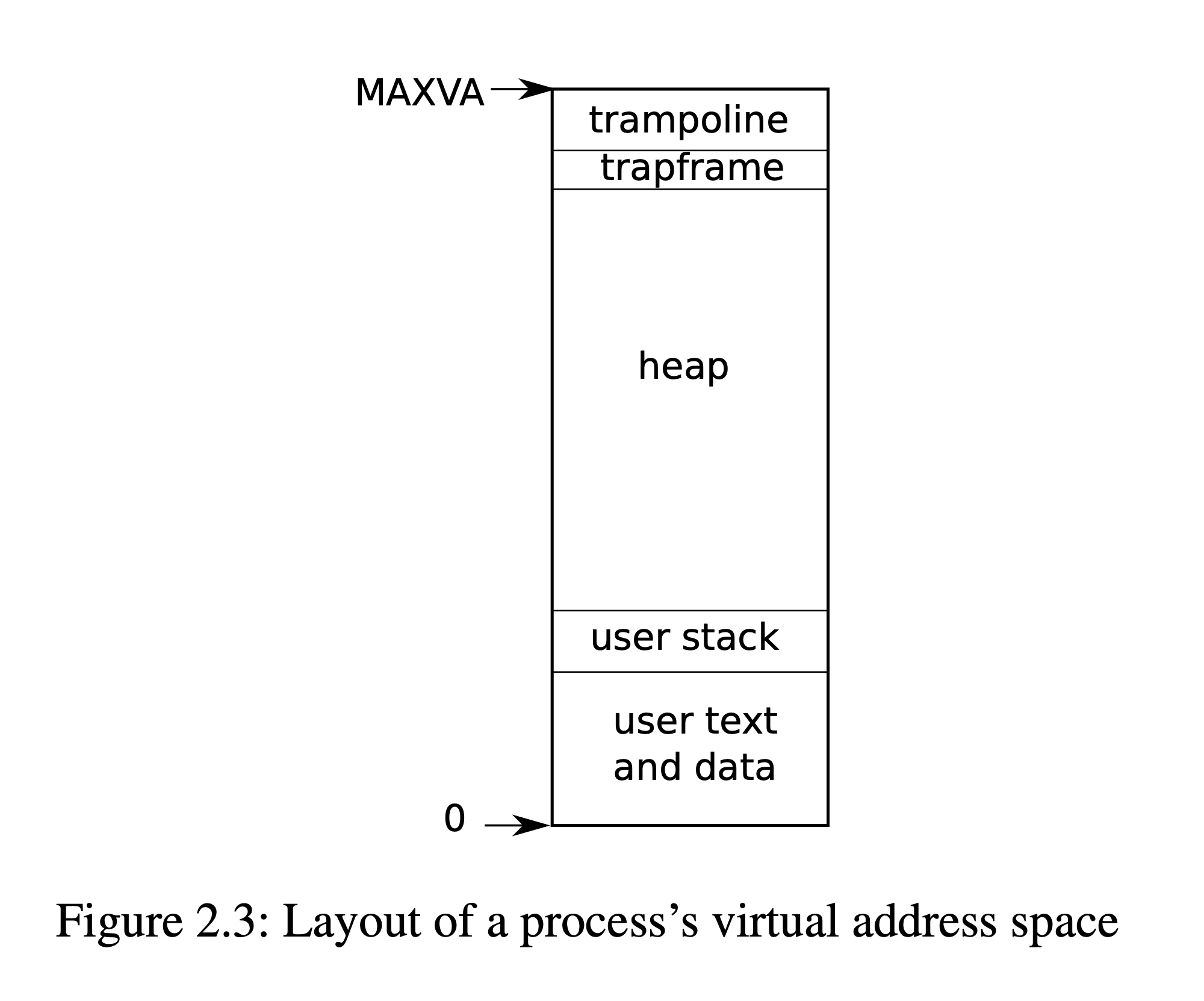1. Trap
Kernel code (assembler or C) that processes a trap is often called a handler; the first handler instructions are usually written in assembler (trampoline.S, rather than C) and are called a vector.
Popular names
-
kernel mode: 内核态
-
user mode: 用户态
-
supervisor: 在内核态工作的具有较高权限的管理者身份
-
user: 与计算机进行交互的普通用户身份 🧑🏻💻 <=> 💻
-
stvec: The kernel writes the address of its trap handler here; the RISC-V jumps to the address in stvec to handle a trap. (指向了内核中处理 trap 的指令的起始地址)
-
sepc: When a trap occurs, RISC-V saves the program counter here (since the pc is then overwritten with the value in stvec).
-
sret: The sret (return from trap) instruction copies sepc to the pc. The kernel can write sepc to control where sret goes.
-
scause: RISC-V puts a number here that describes the reason for the trap. (exception, system call, device interrupt)
-
sscratch: (Supervisor mode scratch) Helps trap handler avoid over writing user registers before saving them. (🌟 OS 留了一个 reg 在自己手上, 对用户进程不可见.)
-
sstatus: The SIE bit in sstatus controls whether device interrupts are enabled. If the kernel clears SIE (0), the RISC-V will defer device interrupts until the kernel sets SIE (1). The SPP bit indicates whether a trap came from user mode (0) or supervisor mode (1), and controls to what mode sret returns.
SSTATUS [SPP _ _ SPIE UPIE _ _ SIE UIE] ^ ^ ^ ^ ^ ^ ^ ^ ^ 8 7 6 5 4 3 2 1 0 -
satp: (Supervisor mode address translation and protection) Tells trampoline the user/supervisor page table to switch to. (包含了指向 page table 的物理内存地址)
-
uservec: Saves user registers in the trapframe, an assembly function.
-
TRAPFRAME (
0x3fffffe000, 保存进程寄存器现场的内存) and TRAMPOLINE ($stvec = 0x3ffffff00, Read-only, 跳板)
-
memlayout.h
// User memory layout // Address zero first: // text // original data and bss // fixed-size stack // expandable heap // ... // TRAPFRAME (p->trapframe, used by the trampoline) // TRAMPOLINE (the same page as in the `kernel`) // Map the trampoline page to the highest address, // in both user and kernel space. #define TRAMPOLINE (MAXVA - PGSIZE) // TRAPFRAME is the next page of TRAMPOLINE #define TRAPFRAME (TRAMPOLINE - PGSIZE) -
PTE_U: flag determines whether the user mode can use current page table. PTE_U = 0: Supervisor, 1: User
-
proc.h
struct trapframe & 32 regs
Good practice